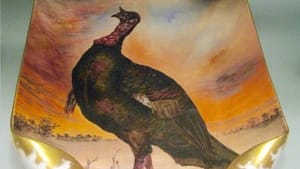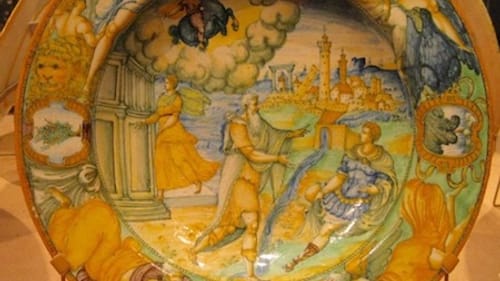Stay in the Loop
BSR publishes on a weekly schedule, with an email newsletter every Wednesday and Thursday morning. There’s no paywall, and subscribing is always free.
Hiding in plain sight
The Philadelphia Museum of Art's collections: Enlightenment minus deadlines

With special and limited arts events attracting arts patrons to Philadelphia museums and theaters, it's easy to overlook what’s available all the time.
Consider the Philadelphia Museum of Art (PMA). Not only is it one of the best places for visual art in the country, it’s also one of the largest. The PMA’s 200 galleries contain more than 225,000 objects, most of which never receive the star treatment afforded high-profile exhibitions. So while it has become automatic to tsk-tsk tourists who do no more than scale Rocky’s steps and pose with his statue, isn’t it kind of the same thing to cross the threshold only for a blockbuster?
The problem is, there’s no urgency. In addition to a deadline, special exhibits provide lots of information for the casual viewer, explaining why items merit attention. Context enhances the experience and isn’t always part of a wander through the galleries, unless the wanderer is already informed about the medium or period.
Take a tour of the everyday, any day
PMA opens its regular collections to drop-in visitors and museum members through tours led by a squad of knowledgeable, engaging guides. Lasting about an hour, tours enable visitors to acquaint themselves with slices of PMA’s massive collection. Each is a unique experience, with content varying from day to day and guide to guide.
In addition to general tours, members can take themed tours; the menu changes monthly. Back in January, options included “Scandalous,” “How to Un-Confuse Confusing Art,” and “Ceramics,” during which I learned how little I knew.
The pleasure of the unexpected
European ceramics were the focus, and about a dozen members were led on a meandering path through examples from Italy, the Netherlands, England, France, and Germany. Our guide used the particularly hard and fine ceramic porcelain as her narrative thread, explaining why the substance became as precious as gold during the Renaissance.
Prized for its pure white color, translucence, and hardness, porcelain originated in China in the sixth or seventh century, and the formula remained a highly guarded secret. Fabricating porcelain requires three things: a fine white clay called kaolin, a rock that transforms into glass at high temperatures, and extreme heat. Porcelain is fired at more than more than 2,600 degrees Farenheit.

An elusive formula
Porcelain arrived in Europe in the 16th century through trade. As demand and prices rose, countries sought to produce their own versions. Italian artisans working in the court of the Medicis succeeded in the 1570s, but the formula was lost, setting off a fevered competition across the continent.
Experimentation produced beautiful imitators, such as English bone china and French Sevres porcelain, to which bone ash or powdered glass were added for strength. Those pseudo-porcelains are known as “soft-paste” porcelains, while true porcelain is “hard-paste.”
The Germans were long thought to have rediscovered the porcelain recipe, though 2010 academic research credits England as being first, in 1683. In any case, German ceramicists do receive credit for first the mass production of large porcelain figures at Meissen in 1708.
The distinctions between real and faux porcelain, and its rarity and value, were new to me. To learn that porcelain was sought as urgently as the moon landing or cancer cures? Suddenly the colorful plates, urns, and figurines took on new significance.
I also learned how much can be gleaned about cultures by the form and decoration of their ceramics, from economic status to social mores. The tour concluded at the PMA’s collection of presidential china, by which time it was somewhat easier to appreciate the significance of the pieces on display.
A Philadelphia link
The tour couldn’t have been timed better, because porcelain in Philadelphia is having a moment. In mid-January, the Philadelphia Inquirer reported on a bowl found at the site of the Museum of the American Revolution. Originally identified as stoneware, the piece had been considered a pedestrian find until analysis revealed it to be a small punch bowl of high-grade porcelain. Equally noteworthy is that the piece is thought to have been manufactured here, and so will occupy a place of prominence instead of being consigned to a storage-area shelf.
The PMA tour was a reminder of the perks of living in a region rich in regular collections, informal concerts, and pop-up performances. On any given day, locals can be enlightened and entertained without advance planning, timed tickets, or crushing crowds.
What, When, Where
Philadelphia Museum of Art Adult Programs. Various dates and topics. Philadelphia Museum of Art, 2600 Benjamin Franklin Parkway, Philadelphia. (215) 763-8100 or philamuseum.org.
Sign up for our newsletter
All of the week's new articles, all in one place. Sign up for the free weekly BSR newsletters, and don't miss a conversation.
